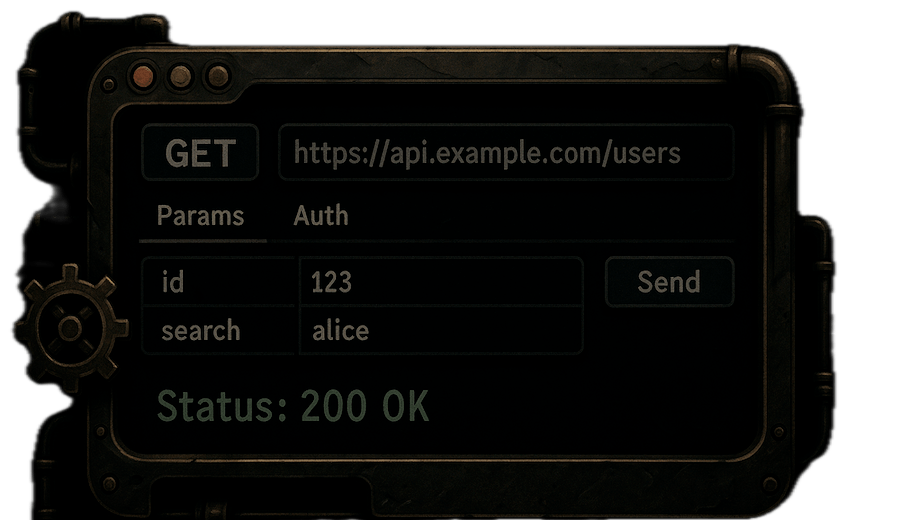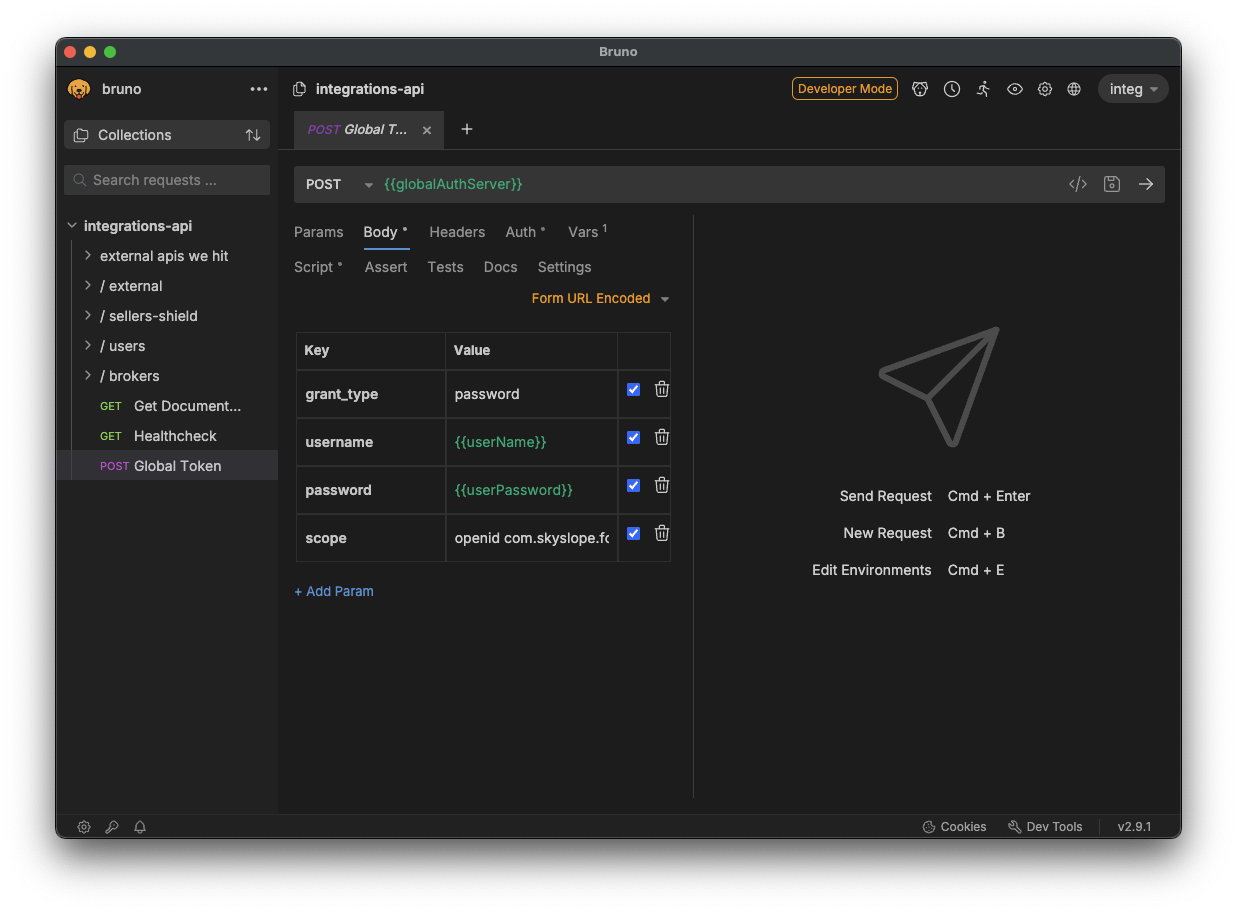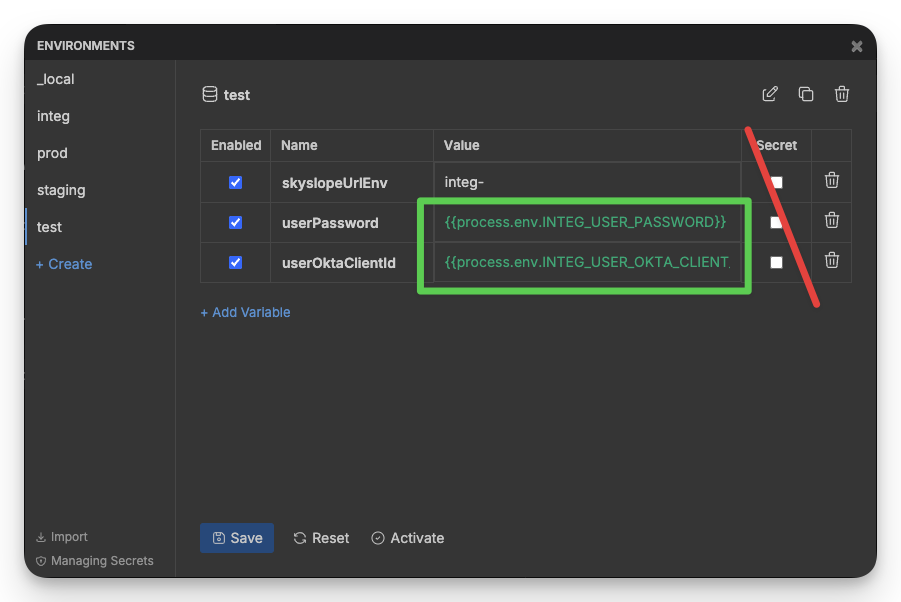Integrate example requests into your normal development workflow

What’s the biggest problem with Postman?
Section titled: What’s the biggest problem with Postman?I implore you, dear reader, to take a second and decide what you think the answer to that is.
.
.
.
.
.
.
.
.
.
.
.
.
.
For me, there’s a clear answer.
EVERYBODY FORGETS TO UPDATE IT
Section titled: EVERYBODY FORGETS TO UPDATE ITPostman is an afterthought. It might get updated, it probably won’t. There’s no visibility for anyone else into whether it got updated.

How could we fix that?
Section titled: How could we fix that?Our entire development workflow is based around the code review process.
Is there a way that postman requests could be code reviewed?
Section titled: Is there a way that postman requests could be code reviewed?Postman has created proprietary version control and pull request custom mechanisms inside their app.
However:
- This process is unfamiliar and very much outside of the normal code review process
- Collections are still reviewed single JSON file
- In reality, this is going to cause versioning to be defacto controlled manually by one person managing your workspace, rather than being owned by the team through standardized processes.
Is there a way Postman requests could be reviewed alongside your source code?
Section titled: Is there a way Postman requests could be reviewed alongside your source code?You can export postman requests to JSON.
So you could export requests to json, add them to version control, and pull request those changes. Others would then have to manually import your updated postman json into their postman to see the updates, and the cycle continues.
This process would be exceptionally annoying:
- Code reviewing JSON isn’t ideal, and one giant JSON blob even less so
- “pulling” others’ changes involves a lot of manual labor for every change
We can do better
Section titled: We can do betterIntroducing, Bruno:

-
Bruno has a familiar UI
- There are a handful of “postman like” apps and they all pretty much look the same. Bruno is no different, not re-inventing the UI wheel
- It is not quite as polished as Postman (Postman had a 12 year head start), but it has the most important features and is under continuous development. They publish their roadmap.
-
Everything is saved onto your file system - 🔑 This is the key innovation that makes Bruno fundamentally superior to Postman
- Bruno requests live inside the same git repo that your code lives in
- Bruno updates are included in the same PR as the corresponding source changes
- This allows reviewers to ensure that these updates happen simultaneously (just like updating tests)
- You can create AI rules or a GitHub action to require that Bruno requests get updated when API endpoints are modified.
- Mass updates to multiple requests are much easier to do via the file system than in a UI
- Bruno uses a custom human readable “language”, (a la applescript, coffeescript, yaml) that makes PR reviews very natural (as compared to say, a big json file).
Usage Tips
Section titled: Usage TipsConverting Postman to Bruno
Section titled: Converting Postman to Bruno- Export collection from postman
- Import collection into bruno
- Clean up your mess of a Postman collection that you never realized was so bad because there was no team ownership over it
Don’t use the environment variable “Secret” checkbox
Section titled: Don’t use the environment variable “Secret” checkbox- The checkbox keeps the secret out of source but also prevents you from having any way of sharing it with other devs
- Instead, distribute secrets the same way we do with code – a .env file

- I like to include a note at the top that provides clarity about what this file is and how to use it; both if you’re viewing it in an IDE or viewing it in a password manager
# Put this at: org/integrations-monorepo/integrations-api/api-examples/.env# This file can be found in Password Manager **Secure Note**: Integrations API Bruno .env file
# INTEGINTEG_USER_PASSWORD="little secure"INTEG_USER_OKTA_CLIENT_ID="0o123"
# STAGINGSTAGING_USER_PASSWORD="medium secure"STAGING_USER_OKTA_CLIENT_ID="0o456"
# PRODPROD_USER_PASSWORD="big secure 1"PROD_USER_OKTA_CLIENT_ID="0o789"Variables
Section titled: Variables-
Similar to postman, you can write pre and post response scripts that set runtime variables via the global
bru.setVar(name, value)function. -
You can also write expressions (in the Vars tab) that do the same thing but without code. You just specify the var name and path to the value using the response object.

-
Bruno supports random data generation for your variables in a bunch of formats. They call these dynamic variables.
{"user": {"id": "{{$randomUUID}}","name": "{{$randomFullName}}","email": "{{$randomEmail}}","phone": "{{$randomPhoneNumber}}","address": {"street": "{{$randomStreetAddress}}","city": "{{$randomCity}}","country": "{{$randomCountry}}"}}}
Use auth: inherit
Section titled: Use auth: inheritMost every api I’ve seen uses the same auth for most of their requests. Set that auth once at the collection level and then have every one of your individual requests just inherit that auth. It makes for much less duplication across your requests, and if something does change you can change it in just that one place.
You can also set auth at the folder level if a group of your requests uses different auth than the rest.
Naming Conventions
Section titled: Naming ConventionsVariables
Section titled: Variables-
It’s nice to be able to distinguish between static environment variables and dynamic runtime variables (e.g. tokens). I like to do so with the casing of the variable name
Variable Type Recommended Casing Env variable camelCaseRuntime variable snake_case
Filenames
Section titled: Filenames- I like spaces in my request names to make them easy to read in the Bruno UI.
- But this also puts spaces in the
.brufile names. - The true request name comes from
meta.name, so you can rename the file manually. - But every time someone changes it in the Bruno UI it will revert back. So I don’t think the juice is worth the squeeze
- But this also puts spaces in the
Bruno Folder Name
Section titled: Bruno Folder Name- When you create a new Bruno collection you choose a name for the directory that contains it
- You could just go with “bruno” but that’s not helpful for people who don’t know what Bruno is
- So I always go with
api-examples
